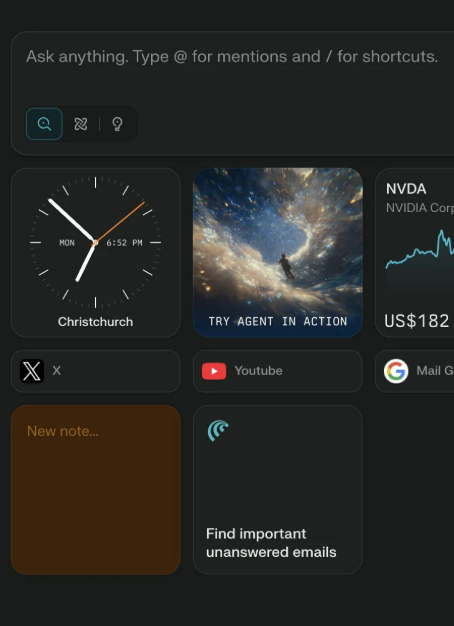什么是MACD指标?理解移动平均收敛散度指标 --知识铺
目录 隐藏
- 什么是MACD指标?
- 它是如何工作的?
- 移动平均收敛散度 (MACD) 指标的组成部分
- MACD 指标的使用方法
- MACD背离
- 零交叉策略
- MACD与。相对强度
- 主要区别
- 移动平均收敛散度的缺点
- 限制和确认
- 移动平均收敛散度的优缺点
- 优点
- 缺点
- 结论
移动平均收敛散度或 MACD 由 Gerald Appel 于 1970 年代后期发明,是一种动量和趋势振荡器/指标。它展示了证券价格的两条移动平均线或均线的变化。结果线,即 MACD 线,是从 26 周期指数移动平均线 (EMA) 中减去 12 周期移动平均线的结果。
移动平均收敛散度 (MACD) 被称为交易的最佳技术指标之一,以其灵活性和简单性而闻名。
它用作动量或趋势指标,还可以识别信号机会,让交易者了解他们的进入和退出趋势。
让我们进行更深入的对话,以更好地理解和解释 MACD:
MACD 围绕一个简单的概念展开——它显示了资产的 12 天和 26 天 EMA(指数移动平均线)之间的差异。各个时期的收盘价用于计算其价值。
如果交易者想了解更多关于 MACD 的信息,则必须完全了解信号线,这是一条九周期 EMA(指数移动平均线)线。其目的是根据市场趋势生成买卖警报。
它是如何工作的?
移动平均收敛散度显示过去的价格趋势,因此称为滞后指标。事实上,估计或计算在市场上不太活跃的股票价格/证券价格或交易不可预测的价格变化并不顺利。
尽管如此,金融专家仍然建议关注其看跌或看涨走势,因为价格走强和走弱趋势。这最终有助于交易者识别进入和退出点。
MACD 术语
以下是每个交易者必须知道的一些关键术语才能理解 MACD:
-
移动平均线:显示特定时间段内资产价格的平均值。
-
指数移动平均线/指数加权移动:一种专注于最近数据点的移动平均线。
-
收敛:显示两条移动平均线 (MA) 相互移动的指标。
-
背离:显示两条相反方向移动平均线的指标。
移动平均收敛散度 (MACD) 指标的组成部分
MACD 指标有 3 个主要组成部分:
MACD线
当较长的移动平均线(即 26 周期)从较短的 MA(12 周期)中减去时,它会生成一条称为 MACD 线的线。它决定了上升和下降的势头或市场趋势。
考虑到标准时间段,MACD 指标是 12 周期 EMA 和 26 周期 EMA 之间减法的结果。为此,两个 EMA 都使用收盘价。
公式:
MACD 线 = 12 天 EMA – 26 天 EMA
信号线
这条线只负责为 MACD 生成交易信号。当 MACD 移动到其信号线 (EMA) 上方时,它会产生买入信号,反之亦然。信号线的目的是平滑移动平均收敛散度线的灵敏度。
对于信号线,九天指数移动平均线并不总是确保准确性,但它与 MACD 线的综合分析可以在各种方面提供帮助。它可以突出显示潜在的反转和/或进入和退出点,特别是在 MACD 图表的末端(远低于或远高于零线)。
公式:
信号线:MACD线的9天EMA
直方图
它是两者之间距离的图形表示,即信号线和 MACD 线的收敛和发散。当后者越过信号线上方时,图表显示正趋势,反之亦然。直方图会立即对价格变化做出反应。当价格上涨时,图表会变大,并随着价格变动放缓而缩小。直方图的主要目的是计算价格行为的波动。
公式:
MACD 直方图:MACD 线 – 信号线
MACD 指标的使用方法
移动平均收敛散度用于揭示资产价格趋势的方向和强度的变化,以及它们何时应该进入或退出头寸。
While there are multiple ways of interpretation, below are some of the widely used and trusted methods to take into consideration:
-
Crossovers
-
Divergences
-
Rapid rises/falls
MACD Signal Line Crossover
Typically, signal line crossovers have emerged as one of the reliable MACD signals to follow in trading. In a bullish crossover situation, the MACD line falls above the signal line (positive) and generates an approval for entry to start trading (also known as buy opportunity).
On the other hand, a bearish crossover happens when the MACD line is below the signal line (negative). It shows a sell opportunity or signifies an exit point. The trends show up for a few days or weeks, based on the strength of the movement.
Here, the worth mentioning part is that irrespective of being helpful for traders, signal crossovers aren’t as reliable as they are thought of. It’s important to know their position on the chart to control the risks.
For example, some traders don’t enter a position until they receive a confirmed cross above the respective line.
Centerline Crossovers
These types of crossover patterns have similar signal crossover patterns except that they revolve around the relationship between the zero/center line and the MACD line.
Example
When the moving average convergence divergence line falls above the centerline, it is a bullish signal. Whereas, a bearish signal is when the MACD line crosses from below the centerline. Moreover, bullish signals are generated when the MACD line moves up from below zero and the situation is the opposite in bearish.
Traders used to wait for confirmed crossovers above the zero line before they could decide to enter a position. This way, they have control over not getting into the wrong position or making an early entry.
In other words, crossovers are more accurate and reliable to conform the prevailing trends. If moving average convergence divergence falls above its signal line upon downside correction, it shows long-term uptrend and bullish confirmation.
It is more likely to proceed with the uptrend.
On the other hand, when MACD crosses below the signal line after a high move, it refers to long-term downtrend and confirms a bearish situation for traders.
Rapid Rises or Falls
When the short-term moving averages act separately from the longer-term moving averages, they are more likely to signal an over-supply or over-demand of an asset- this situation is referred to as MACD rapid rises or falls.
Since moving average convergence divergence is a lagging indicator, traders are suggested to use other technical indicators such as the Relative Strength Index (RSI) to cross-check the trends.
Example
In MACD rapid rises or falls, the trends confirm that the instrument will return to their normal level after showing oversold or overbought states.
When the results are combined with that from the RSI and other technical indicators, traders can get a clear picture about their buying or selling decisions.
MACD Divergence
As the name suggests, there is divergence between the MACD highs or lows and underlying assets’ high and low prices.
Example
In a bullish divergence, the MACD creates two falling lows that correspond with two high asset prices, thereby suggesting buying opportunities in spite of the decline in pricing. They are more likely to proceed with price reversals followed by bringing a visible change in the trend.
When it comes to a bearish divergence, the two MACD falling highs correspond with two rising highs of the instrument’s price, showing that irrespective of an increase in price, buying trends are not as favorable as expected.
Bearish divergence during bullish trends is evident of weakness in the trend.
Some traders used to go for a less reliable trading technique- they choose to trade in bullish divergence, despite of negative trends, to take benefit from the change in the trend.
Divergence Fakeout
Financial experts identified multiple issues with trading divergence. To begin with, divergence may generate false positive signals i.e. possibility of reversal, which may not be true.
The reason behind is frequent plunges and surges in an asset’s prices in response to market participants’ preference to go with the order flow. In fact, forecasts by divergence have lesser predictability, especially for reversals.
Therefore, it can be said that divergence tactics cannot assure accuracy in their results. Likewise, divergence trades are not as error-free as they claim in hindsight because previous data only revolves around successful divergence signals.
Data related to failed divergence is not available for traders to understand flaws and potential risks associated with trading.
Zero-Cross Strategy
Traders get into a long position as soon as they see MACD line crossing from below the 0-line. Practically, it is a bullish signal that asks for some patience and consistency from the traders. On the contrary, when the same line crosses from the above, it is a bearish signal.
It suggests traders to make the most of increasing downward momentum and falling prices.
Histogram bars are of great significance in both cases- the length of histogram bars demonstrate the strength of signals. Or in other words, strong signals make the prices flow with the trend.
MACD VS. Relative Strength
As discussed above, the relative strength index or RSI is designed to show the market trends of an asset. It is responsible to name the market as oversold or overbought based on recent price fluctuations. It works as an oscillator to evaluate average price changes over a specific time period.
Its default time is 14 periods with values ranging between 0 and 100, where 70 refers to overbought situation while 30 shows oversold in the market.
Major Difference
While exploring the difference between the MACD and RSI, one thing is quite certain- the moving average convergence divergence lines don’t show accuracy in overbought or oversold levels. Therefore, a trader or an investor has to study the direction and level of the signal/MACD lines instead of preceding price movements.
As a matter of fact, the RSI focuses on price changes with respect to the recent highs and lows in pricing while MACD explains relationship between two exponential moving averages.
When results from both are combined, they create a clear picture of all technical aspects in the market.
Here, it’s important to remember that since both indicators work on different factors, they are more likely to give opposite estimations.
For instance, the RSI may show overbought situation with an overextended trend on the buying side while moving average convergence divergence anticipates an increase in buying momentum. Either may generate divergence signal (for pricing) in relation to a potential trend change.
Drawbacks of Moving Average Convergence Divergence
Needless to say, nothing is perfect in the world and so does MACD. Like other indicators or oscillators, it possesses some risks and drawbacks that every trader must know before taking any action.
For instance, a reversal indicator may turn out to be false. In the above graph, the zero-cross image has a point that shows the MACD is crossing from below and going back again in a trading session.
If a trader decides to make an entry when the MACD crosses from below, he/she would have to lose stock with the decrease in prices.
Analysis has proven that MACD cannot work efficiently in sideway markets. If an instrument’s prices move within an area between support and resistance, the MACD line would have no option but to shift to the zero line. The reason behind this is the unavailability of up or down trends that are crucial for good performance of moving averages (MAs).
In addition, since moving average convergence divergence works as a lagging indicator, the prices remain above the past lows until the MACD crosses from below. This situation enables traders to enter a long position than what they would have expected.
Limitations and Confirmation
Since moving average divergence delivers false positive signals i.e. the possibility of reversal that doesn’t happen in any way, it’s important to be careful while making a decision.
In fact, divergence is incapable of forecasting all reversals or cannot predict real price reversals and make predictions for multiple reversals that never occur.
Now, to ascertain trading preferences, traders have to seek confirmation from trend-following indicators, like DMI or Directional Movement Index system, and the ADX or Average Directional Index. The latter has been designed to validate whether a trend is real. For confirmation of a trend in place, ADX shows a reading above 25 while a reading below 20 is evident of no trend in place.
Investors, using MACD divergences and crossovers, must cross-check with the ADX indicator before making a trade decision. For instance, despite the MACD demonstrating bearish divergence, trades can verify with the ADX whether the trend is higher in place.
This way, traders can figure out when they should make an entry or exit from the market.
Pros and Cons of the Moving Average Convergence Divergence
Like other oscillators, the MACD tool comes with certain pros and cons that no one can ignore at any cost. To harness this trend indicator and momentum at maximum capability, it’s important to know where it falls short and where it goes higher:
Pros
-
Works as a momentum or trend indicator
-
Demonstrates potential buy/sell signals with the help of the MACD divergence and crossover
-
Enough to be used as a stand-alone analyst
Cons
-
Generates out false positive signals (indicates possible reversals that don’t occur)
-
Doesn’t forecast sufficient real price reversals
-
Cannot quantify the overbought or oversold condition
Conclusion
After the entire discussion, one thing is evident moving average convergence divergence is one of the widely used and valuable technical indicators. It verifies both market momentum and trends, which eventually help in determining trend reversals and trade entry/exit strategies.
Though, like other technical analysis tools, the MACD doesn’t always provide accurate results. It is responsible to generate misleading and false signals, especially during sideways price or weak-trending actions. Hence, to rectify this deficiency or mitigate risk, traders have to combine the MACD results with that of other analysis tools like the RSI indicator.
- 原文作者:知识铺
- 原文链接:https://index.zshipu.com/stocktactics/post/20240413/%E4%BB%80%E4%B9%88%E6%98%AFMACD%E6%8C%87%E6%A0%87%E7%90%86%E8%A7%A3%E7%A7%BB%E5%8A%A8%E5%B9%B3%E5%9D%87%E6%94%B6%E6%95%9B%E6%95%A3%E5%BA%A6%E6%8C%87%E6%A0%87--%E7%9F%A5%E8%AF%86%E9%93%BA/
- 版权声明:本作品采用知识共享署名-非商业性使用-禁止演绎 4.0 国际许可协议进行许可,非商业转载请注明出处(作者,原文链接),商业转载请联系作者获得授权。
- 免责声明:本页面内容均来源于站内编辑发布,部分信息来源互联网,并不意味着本站赞同其观点或者证实其内容的真实性,如涉及版权等问题,请立即联系客服进行更改或删除,保证您的合法权益。转载请注明来源,欢迎对文章中的引用来源进行考证,欢迎指出任何有错误或不够清晰的表达。也可以邮件至 sblig@126.com


